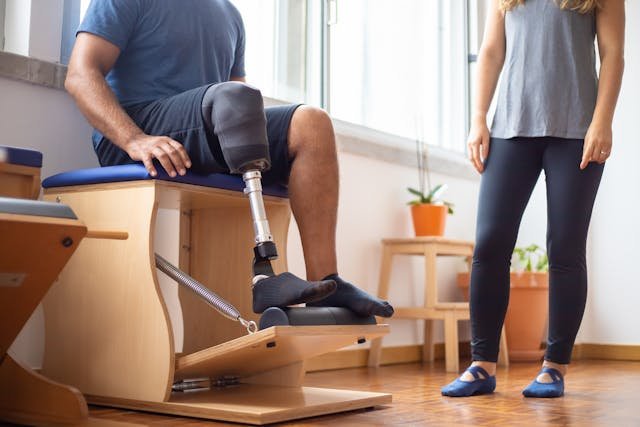For decades, prosthetic technology was controlled by a handful of manufacturers, making high-quality artificial limbs expensive and inaccessible to many. But with the rise of open-source prosthetic development communities, everything is changing. Engineers, medical experts, and everyday innovators from around the world are now collaborating to design, build, and improve prosthetic limbs—making them cheaper, more customizable, and widely available.
Between 2025 and 2030, open-source prosthetic projects will become even more influential, driven by 3D printing, AI-driven design, and online knowledge-sharing platforms. These communities are creating affordable, high-functioning prosthetic limbs that can be manufactured anywhere, giving hope to millions of people who previously could not afford artificial limbs.
At Robobionics, we believe that open-source development is a game-changer for the prosthetic industry, and we are committed to supporting these efforts. In this article, we explore how open-source prosthetic communities are reshaping accessibility, innovation, and affordability for amputees worldwide.
1. What Are Open-Source Prosthetic Development Communities?
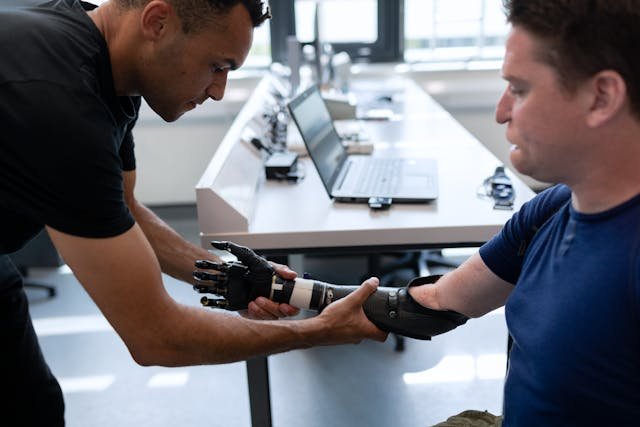
Open-source prosthetic development communities are collaborative networks of designers, engineers, medical professionals, and volunteers who share prosthetic designs, blueprints, and software freely. Unlike traditional prosthetic manufacturers that keep designs proprietary, these communities make their technology publicly available, allowing anyone to download, modify, and improve prosthetic models.
These communities rely on 3D printing, open-access software, and digital communication tools to create prosthetic limbs that can be easily produced with minimal cost. Many of these prosthetics are designed using modular components, making it simple to replace or upgrade parts without needing a completely new limb.
By 2030, open-source prosthetic communities will become the backbone of global prosthetic innovation, helping people in developing countries, war zones, and remote areas gain access to high-quality artificial limbs without relying on expensive imports or long wait times.
2. The Role of 3D Printing in Open-Source Prosthetic Development
One of the biggest drivers of open-source prosthetics is 3D printing, which allows prosthetic limbs to be manufactured locally, affordably, and quickly. Instead of relying on traditional manufacturing processes, 3D printing enables prosthetic makers to create customized limbs in a matter of hours.
With 3D printing, open-source prosthetic communities can modify designs to suit each user’s needs, adjusting for size, fit, weight, and flexibility. This is especially beneficial for children, who outgrow their prosthetic limbs quickly, as well as people in rural or underserved regions, where access to prosthetic clinics is limited.
By 2030, 3D printing will make prosthetic development even more efficient, allowing for on-demand production and personalized designs, ensuring that anyone who needs a prosthetic limb can have one that fits their body perfectly.
3. How AI Is Accelerating Open-Source Prosthetic Innovation

Artificial intelligence is playing a crucial role in optimizing prosthetic designs, automating adjustments, and improving limb functionality. Open-source communities are now using AI to analyze user movement, predict design improvements, and refine prosthetic performance.
Machine learning algorithms can study how users walk, grasp objects, and interact with their surroundings, then make real-time adjustments to grip strength, step balance, and movement control. AI is also being used to streamline the 3D printing process, ensuring that prosthetic designs are strong, lightweight, and durable while minimizing material waste.
By 2030, AI-powered software tools will allow open-source developers to create even more advanced prosthetic limbs, making them more responsive, adaptive, and personalized to each user’s specific needs.
4. The Impact of Open-Source Prosthetics on Developing Countries
In many developing countries, prosthetic limbs are out of reach for millions of amputees due to high costs and lack of availability. Open-source prosthetic communities are bridging this gap by providing affordable, locally produced prosthetic solutions.
By training local makers, hospitals, and nonprofit organizations to use 3D printing and open-source prosthetic blueprints, these communities ensure that amputees in rural and underserved areas can receive high-quality artificial limbs at a fraction of the cost. Open-source designs also eliminate the need for expensive shipping and import fees, allowing prosthetic limbs to be produced directly where they are needed.
By 2030, developing countries will have thriving prosthetic maker spaces, empowering local engineers and healthcare workers to provide prosthetic care without relying on international manufacturers.
5. Customization and Personalization: A Major Advantage of Open-Source Prosthetics

One of the biggest limitations of traditional prosthetic limbs is that they are mass-produced and often uncomfortable for users with unique body shapes, movement patterns, or preferences. Open-source prosthetic designs allow for full customization, ensuring that each limb is tailored to the user’s needs and lifestyle.
Users can adjust grip strength, joint flexibility, and limb length based on their activities, whether they need a lightweight prosthetic for daily use or a durable one for physical labor or sports. Many open-source prosthetics also include modular designs, allowing users to swap out parts easily instead of replacing the entire limb.
By 2030, personalized prosthetic limbs will be the standard, ensuring that every user gets a prosthetic that fits comfortably and enhances their quality of life.
6. The Role of Global Collaboration in Open-Source Prosthetic Development
Unlike traditional prosthetic manufacturers that operate in closed research environments, open-source prosthetic communities thrive on global collaboration. Engineers in one country can design a prosthetic prototype, while medical experts in another country can refine it based on real-world user feedback.
Online platforms like GitHub, Thingiverse, and e-NABLE are enabling developers to share prosthetic designs, troubleshoot problems, and improve limb functionality together. This approach ensures that the best ideas and innovations are not limited to one company or country but are available to everyone who needs them.
By 2030, global collaboration will lead to some of the most advanced, cost-effective prosthetic solutions ever created, ensuring that people around the world benefit from shared innovation and expertise.
7. The Future of Open-Source Prosthetic Development (2025-2030)
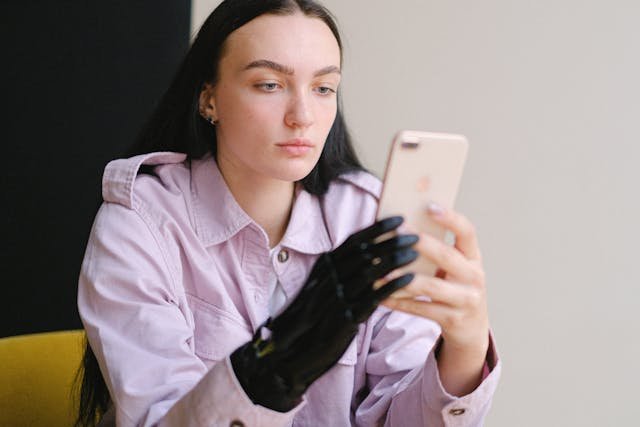
The future of prosthetic development will be shaped by continued advancements in AI, 3D printing, neural integration, and global collaboration. Open-source communities will continue to push boundaries, creating prosthetic limbs that are lighter, smarter, and more intuitive.
By 2030, we can expect to see:
- Brain-controlled open-source prosthetics, where users can move their limbs with their thoughts.
- Affordable, fully 3D-printed prosthetic limbs that match the performance of high-end commercial models.
- Cloud-connected prosthetics that allow users to download updates, adjust settings, and access remote support from anywhere in the world.
These advancements will ensure that high-quality prosthetic limbs are available to everyone, regardless of income or location, breaking down barriers and making artificial limbs more accessible than ever before.
8. How Open-Source Prosthetic Communities Are Encouraging Innovation
Open-source prosthetic development is not just about accessibility; it is also about innovation. Traditional prosthetic companies often focus on mass production and standardization, limiting the rate at which new ideas reach the market. Open-source communities, however, operate with continuous experimentation, rapid prototyping, and real-time collaboration, allowing for faster advancements in prosthetic technology.
The decentralized nature of open-source development encourages creativity and problem-solving. Developers and engineers across the world can test new materials, integrate artificial intelligence, and improve upon previous designs without waiting for commercial approval. These communities function as a global laboratory, where users and experts share feedback, refine prosthetic performance, and eliminate common issues with existing designs.
By 2030, open-source prosthetic communities will likely become a hub for breakthroughs in biomechanics, neural interfaces, and smart materials, providing solutions that are even more advanced, customizable, and responsive than traditional prosthetic offerings. As a result, amputees will not only have access to more affordable prosthetics but also benefit from technology that evolves faster to meet their needs.
9. The Role of Universities and Research Institutions in Open-Source Prosthetic Development

Universities and research institutions are playing a crucial role in open-source prosthetic development, bringing academic knowledge, cutting-edge technology, and resources to these global communities. Many universities now run prosthetic innovation labs, where engineering and medical students collaborate to develop new limb designs, test smart materials, and improve prosthetic control systems.
Through partnerships with open-source communities, researchers can publish their findings publicly, ensuring that important discoveries benefit people worldwide rather than being confined to corporate patents. University-led initiatives also introduce grant funding and sponsorships, helping local organizations build 3D-printed prosthetic labs and training centers.
By 2030, collaboration between universities and open-source communities will lead to faster adoption of new materials, improved prosthetic durability, and more effective human-machine interaction models. The blending of academic research and real-world testing will make prosthetic limbs not only more functional but also more aligned with the needs and experiences of actual users.
10. How Open-Source Prosthetics Are Empowering Amputees to Become Developers
One of the most transformative aspects of open-source prosthetics is giving amputees the power to participate in the design and development process. Unlike traditional prosthetic models, where users must rely on manufacturers for modifications and repairs, open-source platforms allow amputees to directly influence the technology they use every day.
Through online maker communities and prosthetic innovation hubs, many prosthetic users are now learning how to modify and 3D-print their own limbs, tailoring them to their unique needs. Some have even gone a step further by contributing their ideas to global projects, helping to improve prosthetic functionality for others. This shift represents a major change in how assistive technology is developed, moving from a passive consumer model to an active, user-driven approach.
By 2030, open-source prosthetic communities will continue to encourage amputees to become co-creators of their own mobility solutions, ensuring that prosthetic limbs are not just designed for users but designed by them as well. This will create a future where amputees have more control, confidence, and independence, making prosthetic technology a truly collaborative effort.
11. Addressing the Challenges of Open-Source Prosthetic Development
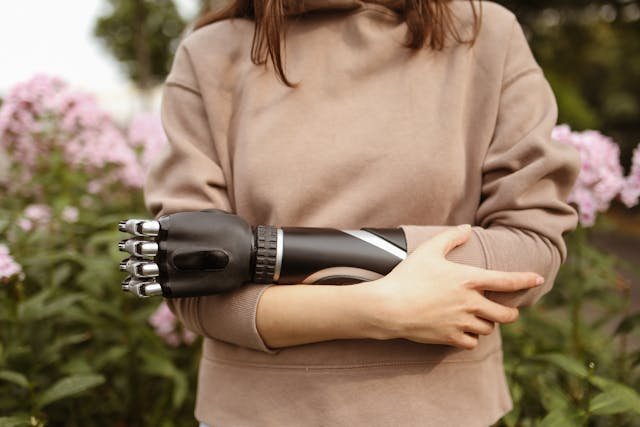
While open-source prosthetic communities offer numerous benefits, they also face challenges that must be addressed for long-term success. One of the main concerns is quality control and safety. Because open-source designs are freely available, not all prosthetic models go through standardized medical testing, which raises concerns about durability and long-term usability.
Another challenge is scaling production. While 3D printing allows for rapid prototyping, not all regions have access to high-quality printing materials and equipment, limiting widespread adoption. There is also the issue of training and education, as many people in developing countries may not have the technical knowledge to assemble or maintain their prosthetic limbs without external assistance.
By 2030, solutions such as global certification programs, government partnerships, and local training centers will be necessary to ensure that open-source prosthetics maintain high safety standards, reliable production methods, and proper user education. Addressing these challenges will be key to making open-source prosthetics a mainstream alternative to commercial offerings.
12. The Role of Governments and Nonprofits in Supporting Open-Source Prosthetics
Governments and nonprofit organizations are beginning to recognize the potential of open-source prosthetics to improve healthcare accessibility. In many countries, traditional prosthetic limbs are too expensive for public health systems to provide on a large scale, leaving many amputees without access to mobility solutions. Open-source development presents a cost-effective alternative, but it requires support from policymakers and NGOs to reach its full potential.
Some governments have already started investing in community-run prosthetic labs, providing grants and infrastructure to support local 3D printing and development centers. Nonprofit organizations are also stepping in by funding open-source prosthetic projects, distributing free limb designs, and training technicians to build and maintain these prosthetics in underserved areas.
By 2030, greater government and nonprofit involvement will help open-source prosthetic initiatives scale up, ensuring that more people—especially in low-income and rural areas—can access affordable, high-quality artificial limbs without financial barriers. If policies are put in place to integrate open-source prosthetics into national healthcare programs, it could completely transform how prosthetic care is delivered worldwide.
13. The Future of Open-Source Prosthetic Development Communities
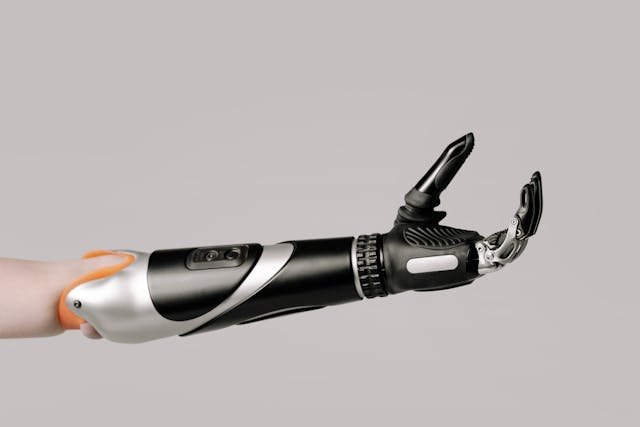
Looking ahead, open-source prosthetic communities will continue to push the boundaries of what is possible, making artificial limbs more affordable, customizable, and technologically advanced. The next decade will see rapid developments in brain-controlled prosthetics, AI-driven enhancements, and fully customizable limb designs, all made possible through global collaboration.
One major shift will be the integration of prosthetic technology with other assistive devices, such as exoskeletons and wearable robotics, creating a future where people with limb loss have access to more advanced mobility solutions than ever before. Another expected development is crowdsourced medical research, where global data-sharing among prosthetic users and engineers leads to even more precise and effective prosthetic models.
By 2030, open-source prosthetic development will no longer be seen as an alternative to commercial prosthetics—it will be a standard part of the industry, influencing how mainstream manufacturers design and distribute their products. The combination of low-cost production, AI-driven personalization, and user-driven innovation will make prosthetic technology more equitable and accessible to all.
Final Thoughts: Open-Source Prosthetics Are Changing Lives
The rise of open-source prosthetic development communities is revolutionizing the way artificial limbs are designed, produced, and distributed. With global collaboration, 3D printing, AI-driven improvements, and direct user involvement, these communities are breaking down barriers that once made prosthetics expensive, outdated, and difficult to obtain.
By 2030, millions of people worldwide will benefit from customizable, high-functioning prosthetics that can be made locally and tailored to individual needs. The success of open-source development is proving that medical technology does not have to be locked behind patents and high costs—it can be a shared, community-driven effort that empowers people everywhere.
At Robobionics, we support the open-source movement and believe in making prosthetic technology as accessible and advanced as possible. If you’re ready to be part of the future of affordable, high-quality prosthetic development, book a free demo with Robobionics today and discover how technology, collaboration, and innovation are changing the world of prosthetics for the better.



